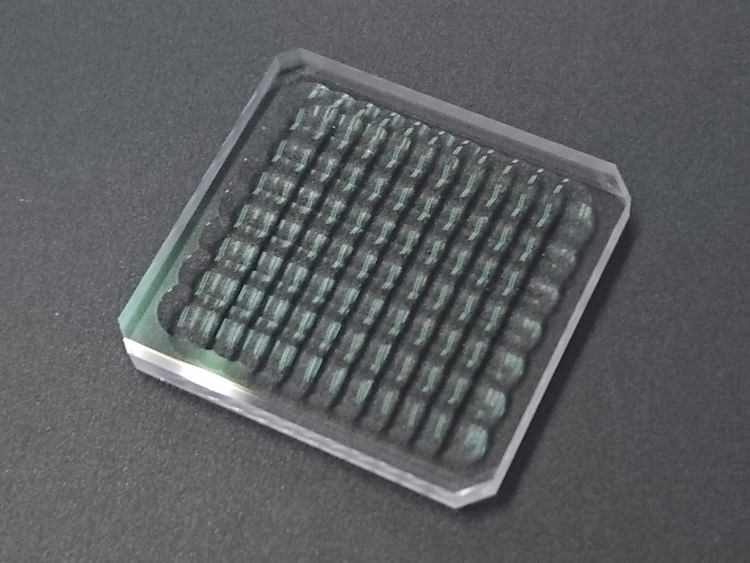What is Microlens Array and What does it look like?
Microlens arrays are also called as microlenticular arrays or lenslet arrays. They help in increasing the optical fill factor in CCDs like interline transfer devices that go through reduced aperture because of the metal shielding. These small lens systems work in a way that they focus and concentrate light onto the photodiode surface rather than letting it to fall on the non-photosensitive parts of the device where it is lost from the imaging information gathered by the CCD.
A typical lenslet placement scheme consists of a tiny optical lens that is strategically placed over the dye layer and the metal light shield of a photodiode. The lenslets are either placed in a parallel array in the ongoing CCD fabrication process of are composed out of a material like quartz and kept on the array surface in the packaging phase. Every lenslet is a high quality optical surface that contains the refractive elements that ranges in the size from hundreds to around 10 microns in diameter on the basis of the application. The lens quality is so amazing that the microlenses are physically tantamount to an ordinary single element lens.
Apart from the micro lens arrays to the CCD photodiodes it can raise the optical fill factor by thrice the amount that can be done without the tiny optical parts. Raising the fill factor gives away a corresponding increase in the sensitivity of the photosite. Microlens arrays offer a great increase in the performance of the interline transfer CCD imaging arrays that contain lateral overflow drains and a huge amount of shielded pixel space. These devices usually go through reduced optical fill factors due to the reduced active pixel area when compared to the total pixel size.

In an interline transfer CCD pixel pair, one is equipped with a microlens to focus light into the photodiode, while the other must take in the incident light rays without the advantage of optical assistance from a microlens. Incident photons that are subject to microlens are diverted into the photodiode by refraction via the glass or polymer containing the microlens. The photodiode with no microlens gathers a really low portion of incoming photons as they can impact on the shielded areas like the exposure gate and neighboring structures which are not useful in the charge integration. The optical fill factor of the interline CCDs can be brought down to less than 20 percent by the means of shielded vertical transfer shift registers. With the help of microlens array, the fill factor can reach a 100 percent on the basis of the manufacturing parameters.




